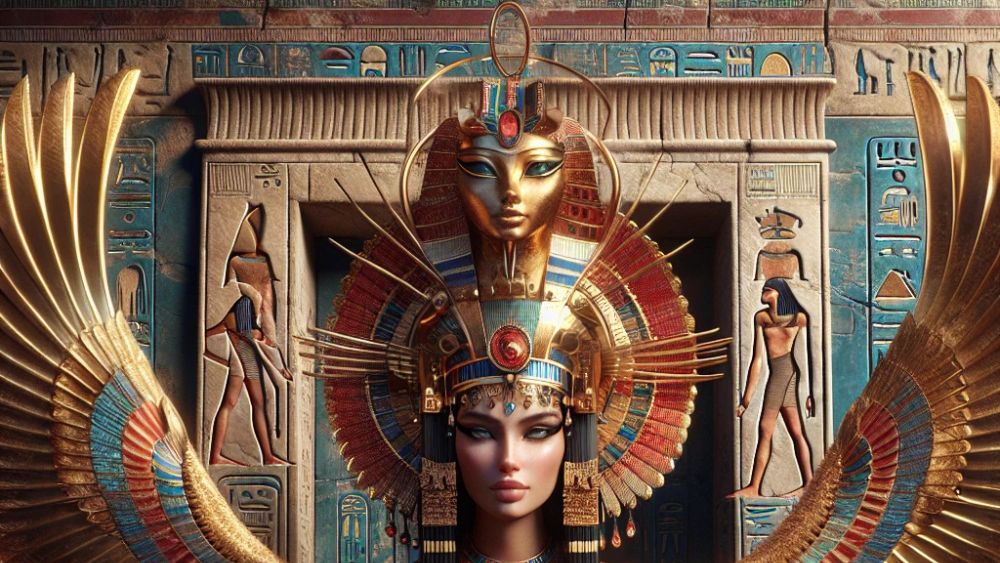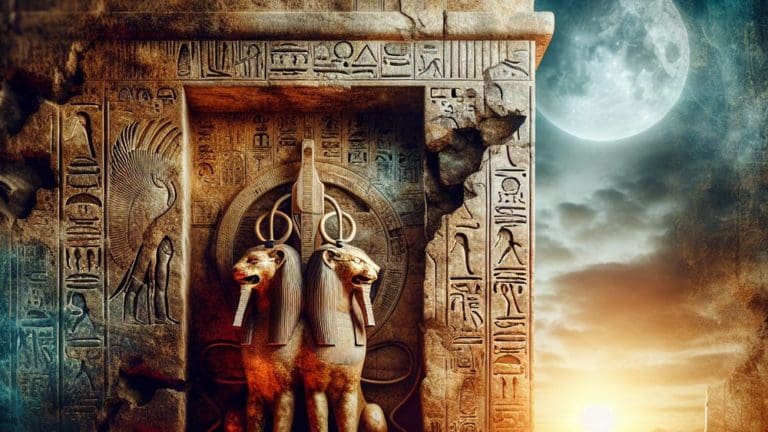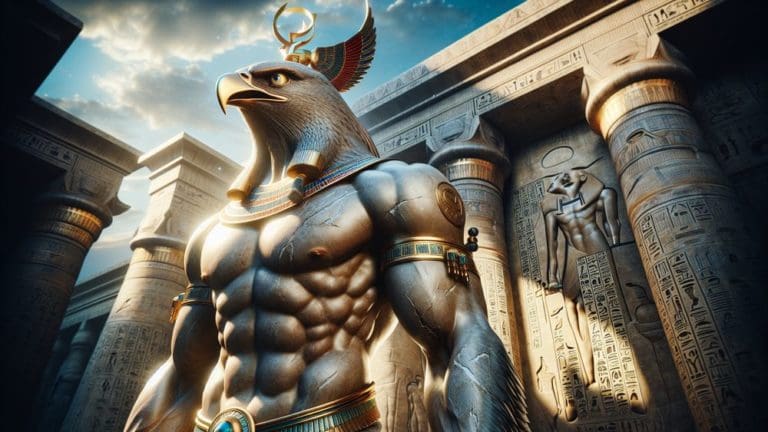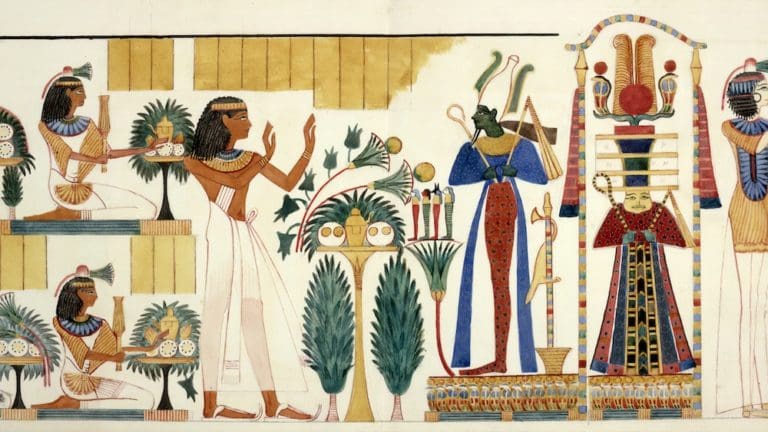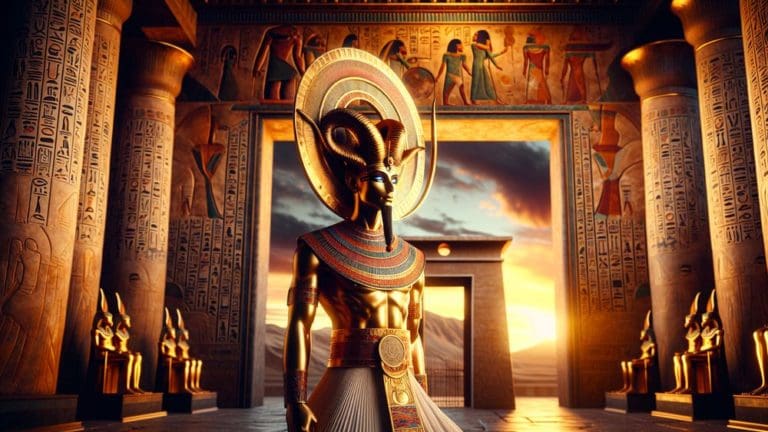Did Nephthys Have Wings? Unveiling The Truth
Did Nephthys Have Wings? Unveiling The Truth
Have you ever gazed upon the sandy thresholds of Egypt’s ancient temples or delved into the mystic scrolls of hieroglyphs, and wondered, did Nephthys have wings? This elusive deity, often overshadowed by her more prominent sister Isis, has captivated historians and mythology buffs alike with her mystical iconography.
But why the wings? Are they merely artistic expressions or do they hold a deeper, more sacred meaning? Join me on a journey back through the corridors of time to uncover the truths and tales that swirl like desert sands around Nephthys, the enigmatic bird goddess. Together, we’ll explore her depictions across the relics of ancient Egypt, and decipher the symbolic significance of her fabled wings.
With each step, archaeological finds and ancient texts will guide us, just as a torch illuminates hidden paths in a forgotten tomb. So, kindle your innate curiosity and prepare to unravel an age-old mystery. Did Nephthys truly have wings? Was she a protector, a guide, or something more? Let’s unfurl history’s scrolls and reveal the narrative long buried beneath the sands.
The Iconography of Nephthys
Throughout the millennia, symbols and iconography have served as a language bridging the mortal realm with the divine. Nephthys, the goddess of the night and mourning, is often depicted in a way that stimulates as much wonder as the starlit sky above the Pyramids of Giza. But what do these images truly reveal about her? Each line and curve is a piece to the puzzle of the past, beckoning us to piece together her story.
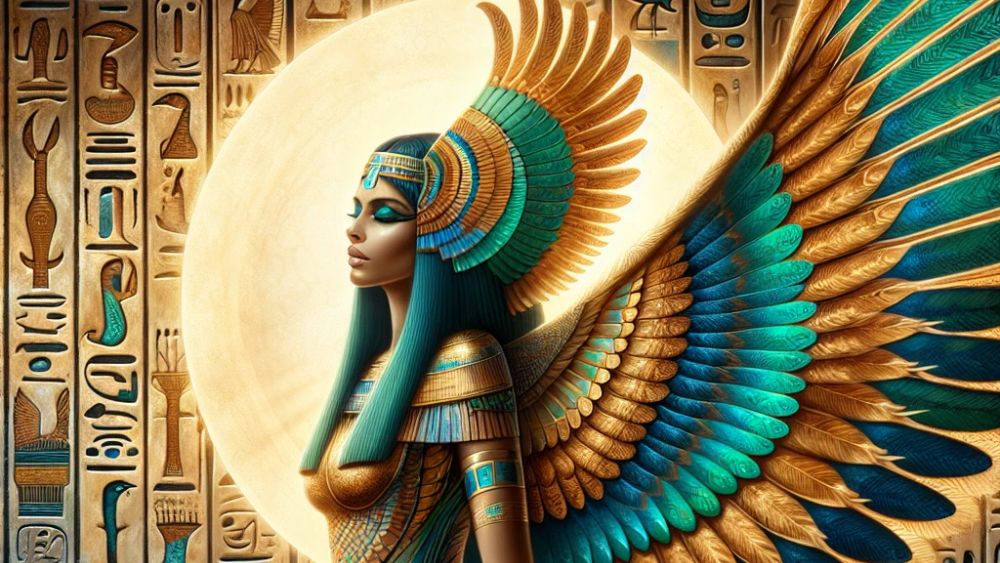
Depictions of Nephthys in Ancient Egyptian Art
As the brush strokes of history painted the myriad gods and goddesses of Ancient Egyptian lore, Nephthys stood among them, often enshrouded in mystery.
- In temple carvings,
- papyrus scrolls,
- and magnificent frescoes,
we find her figure, sometimes with outstretched wings cradling the dead or offering protection over sacred sites.
Yet, the question endures – did Nephthys have wings as part of her divine form, or were they symbolic embellishments added by the artisans of yore?
- It’s a riddle that beckons the curiosity of all who stand before her depictions,
- pondering if she, like Isis, was revered as a bird goddess soaring through the vault of heaven.
Nephthys, one of the gods and goddesses of Ancient Egyptian lore, is often depicted with outstretched wings, leaving us to wonder if they were part of her divine form or symbolic additions.
The Symbolism Behind Nephthys’ Imagery
Behind every symbol lies a universe of meaning, and Nephthys’ imagery is a cosmic expanse brimming with interpretations. Her wings, whenever they grace ancient artefacts, are not mere appendages; they are potent symbols of protection, encircling mummies and watching over the afterlife like the ever-vigilant guardians of the underworld.
Indeed, these wings evoke a sense of the transcendent, suggesting Nephthys’ role as a guide for the souls transitioning from the corporeal to the spiritual plane. Did Nephthys have wings in the literal sense? Perhaps not. But in the symbology of Ancient Egypt, wings were conveyors of divine presence and guardianship – a tether between earth and the eternal.
Nephthys’ Role in Egyptian Mythology
In the intricate pantheon of Egyptian gods, Nephthys stands as a beacon of mourning and nightfall. Yet, to fully grasp her essence and influence, one must delve into her role within the tapestry of mythology that has been woven across the sands of time. Her narrative threads through legends of death and transition, blending darkness with a profound sense of guardianship.
Nephthys and Her Relationship with Isis
In the dance of the gods, Nephthys and Isis were sisters – twin flames emanating from the same cosmic birth. Did Nephthys have wings akin to her beloved sister?
The bond between these two deities was woven with the strength of nylon and the delicacy of silk.
- Nephthys, often seen as the shadowy reflection of Isis, complemented her sister’s life-affirming energy with her domain over the transitionary spaces of death and the afterlife.
- Together, they formed a balance – Isis with her nurturing embrace, Nephthys with her solemn whispers guiding the dead to the dusky halls of eternity.
Their connection is beautifully encapsulated in the mortuary rituals of Ancient Egypt, where depictions often portray Isis and Nephthys with wings outspread, as if to signify their shared task of protecting the soul’s journey. Indeed, one wonders if Nephthys’s wings served the same sacrosanct purpose as her sister’s – wings that did not merely represent flight but the soaring spirits of the departed.
The Protective Functions of Nephthys
The ancient Egyptian goddess Nephthys is often overshadowed by her more famous sibling Isis, but her role is no less significant. Serving as a divine attendant and protector, Nephthys was revered for her powerful protective functions, especially in the context of the afterlife. Her presence was thought to shelter the spirits of the dead, defending them from the dangers lurking in the journey to the afterlife.

Her protective mantle extended beyond the realm of the dead. In life, Nephthys was invoked to guard over the home and family, a spirit of watchfulness embodying the nurturing aspect of the ancient Egyptian pantheon. The notion that Nephthys could have wings would augment her protective domain, allowing her to spread her reach over an even vaster expanse, wrapping those in her care in a feathered embrace
It is in the rich tapestry of myth where we uncover clues about the extent of her protective powers. Was Nephthys also given wings to allow her to fulfill these protective duties more effectively? If did Nephthys have wings, perhaps her mythic form could transcend the earthly plane, taking to the skies to offer unseen guardianship. The image of a winged Nephthys would be a fitting symbol for her all-encompassing shield of safety.
The Winged Goddess: Exploring the Evidence
As we venture deeper into the enigma, the question arises: did Nephthys have wings? This image, potent with symbolism, could change our perceptions of her role within the Egyptian pantheon. Do carvings, paintings, or sacred texts offer conclusive evidence of her winged depictions? The hunt for proof is as thrilling as the prospect of her celestial form itself.
Comparing Nephthys and Isis’ Winged Representations
To grasp the full picture, we must compare Nephthys with her sister, Isis, who is frequently depicted with wings. While Isis is often shown using her wings to breathe life into Osiris, restoring him from the clutches of death, the representations of Nephthys are more subtle. Did encounters with her divine wings occur in less visible realms, or were they depicted differently?
When addressing did Nephthys have wings, it’s important to note the symbolism behind these representations.
- Ancient Egyptians perceived wings as embodying protection, with the deities enveloping the deceased with their feathered appendages to guide their souls safely through the afterlife.
- A comparison of artistic depictions may reveal that while Isis displays her wings prominently, Nephthys’ wings, if present, might be shown in a closed or less conspicuous manner – perhaps symbolizing her quieter role as a protective force.
Archaeological and Textual References to Nephthys’ Wings
Unraveling the layers of the past, we seek tangible connections to prove whether did Nephthys have wings was a part of ancient Egyptian belief. Archaeological discoveries have given us countless insights into Egyptian iconography, each artifact a piece of the puzzle.
Textual references, likewise, play a pivotal role. Hymns, prayers, and mortuary texts could hold the key to understanding how Nephthys was conceptualized by her worshippers. Did they speak of her as a winged guardian or was this an attribute reserved solely for her counterparts? The answers lie hidden within the fragments of papyrus and stone that have withstood the test of time.
Archaeological discoveries and textual references hold the key to understanding whether Nephthys, an ancient Egyptian deity, was depicted with wings or not.
FAQs
1. Did Nephthys always have wings in her depictions?
Nephthys did not always have wings in her depictions. In ancient Egyptian art, she was often portrayed without wings, particularly in earlier dynastic periods. The inclusion of wings, which are indicative of her protective role and connection to the afterlife, became more prevalent in later periods.
2. What do wings symbolize in Egyptian mythology?
In Egyptian mythology, wings symbolize protection, divinity, and rebirth. They were often associated with guardian deities like Nephthys, who were believed to use their wings to shelter or provide aid to the souls of the deceased during their journey to the afterlife.
3. How are Nephthys’ wings portrayed differently from those of Isis?
Nephthys’ wings are often portrayed as more elongated and narrower than those of Isis. While Isis’ wings tend to be more broad and associated with motherhood and magic, Nephthys’ wings are typically shown in a more outstretched form, signifying her role as a protector of the dead.
4. Are there any specific myths that feature Nephthys using her wings?
Specific myths that feature Nephthys using her wings are not as commonly found as the ones featuring Isis. However, in funerary texts, Nephthys is often described using her wings to envelop and protect the dead, assisting in their ascension to the heavens.
Conclusion
As we draw the veils back from the sands of time, the question of “did Nephthys have wings” reverberates through the annals of ancient Egyptian mythology with an echo of mystery. It is clear from art and scripture that the depictions and roles of Nephthys evolved, reflecting the dynamic and fluid nature of religious beliefs.
Nephthys’ portrayal with wings is not universal but frequently associated with her protective functions. The wings, more than physical appendages, are potent symbols, weaving her presence into the fabric of the afterlife narratives.
In concluding our exploration, we find that the flight of Nephthys across the horizon of our understanding is far from over. Did Nephthys have wings? The answer is a testament to the vibrant and complex theology of a civilization that continues to captivate us with its mysteries and allure. May we carry the torch of inquiry further, inviting you, fellow travelers and history buffs, to continue this journey of discovery. Until our next adventure into the past,
Warmest regards, Cedric

